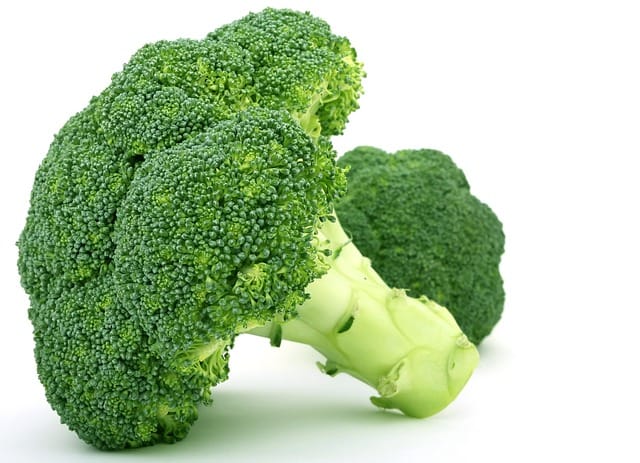How to grow Broccolis
Broccoli is a nutritious and delicious vegetable that can be easily grown in your own garden

In this article:
- Introduction
- Choosing the Right Variety
- Preparing the Soil
- Selecting an Ideal Location
- Starting Broccoli Seeds Indoors
- Transplanting Seedlings
- Caring for Broccoli Plants
- Watering and Fertilizing
- Controlling Pests and Diseases
- Harvesting Broccoli
- Common Issues and Troubleshooting
- Storing and Preserving Broccoli
- Delicious Broccoli Recipes
- Conclusion
Introduction
Broccoli is a nutritious and delicious vegetable that can be easily grown in your own garden. It belongs to the brassica family and is packed with vitamins and minerals. In this article, we will guide you through the process of growing broccoli from seed to harvest.
Choosing the Right Variety
There are different varieties of broccoli available, and choosing the right one is important. Consider factors like maturity time, size of the head, and climate suitability. Popular varieties include Green Goliath, Calabrese, Romanesco, and Purple Sprouting.
Preparing the Soil
Broccoli prefers well-draining soil with a pH level of 6.0 to 7.5. Prepare the soil by removing any weeds, rocks, or debris. Add organic matter, like compost or well-rotted manure, to enrich the soil and improve its fertility. Incorporate the organic matter using a garden fork or tiller.
Selecting an Ideal Location
Broccoli loves full sun, so select a location in your garden that receives at least 6 hours of direct sunlight per day. Ensure the area is protected from strong winds, as broccoli can become damaged easily.
Starting Broccoli Seeds Indoors
Start your broccoli seeds indoors 6 to 8 weeks before the average last frost date in your region. Plant the seeds in trays or pots filled with seed-starting compost. Keep the soil consistently moist, and place the trays in a warm location with temperatures around 70°F (21°C).
Transplanting Seedlings
When the seedlings have developed their first true leaves, they are ready to be transplanted into your garden. Harden off the seedlings by gradually exposing them to outdoor conditions over a week. Dig a hole for each seedling, ensuring it is deep enough to accommodate the roots. Space the broccoli plants 18 to 24 inches apart.
Caring for Broccoli Plants
Ensure that the soil around your broccoli plants remains consistently moist but not waterlogged. Mulch the soil to retain moisture, suppress weeds, and regulate temperature. Remove any weeds that compete with the broccoli for nutrients. Thin the plants if they are overcrowded, leaving the healthiest ones.
Watering and Fertilizing
Water your broccoli plants regularly, aiming to provide 1 to 1.5 inches of water per week. Avoid overhead watering, as wet foliage can lead to disease. Fertilize the plants with a balanced vegetable fertilizer every 3 to 4 weeks to ensure optimal growth and development.
Controlling Pests and Diseases
Broccoli is susceptible to various pests and diseases such as aphids, cabbage worms, and clubroot. Use organic pest control methods like hand-picking pests, introducing beneficial insects, or applying organic insecticides. Rotate crops each year to reduce the risk of disease buildup.
Harvesting Broccoli
Harvest broccoli heads when they are firm, tight, and dark green. Cut the central head with a sharp knife, leaving about 5 inches of stem. This encourages the development of side shoots for additional harvests. Harvest before the flowers on the heads start to open, as the broccoli becomes bitter at that stage.
Common Issues and Troubleshooting
Broccoli plants may face issues like yellowing leaves, poor head formation, or pests. Learn how to troubleshoot and resolve these common problems to ensure healthy broccoli plants and a successful harvest.
Storing and Preserving Broccoli
Store freshly harvested broccoli in the refrigerator for up to a week. To preserve the vegetable, blanch the florets in boiling water for a few minutes, then transfer them to an ice bath to stop the cooking process. Once cooled, drain the florets and freeze them in airtight containers or freezer bags for long-term storage.
Delicious Broccoli Recipes
Broccoli can be prepared in various tasty ways. Try out some delicious recipes such as roasted broccoli with garlic and parmesan, broccoli and cheddar soup, or broccoli stir-fry with tofu. Experiment and enjoy the wonderful flavors of this versatile vegetable.
Conclusion
Growing broccoli in your garden is a rewarding experience that allows you to enjoy fresh and nutritious produce. By following the steps and tips outlined in this guide, you can successfully grow your own delicious broccoli. Start planning your garden today and soon savor the taste of homegrown broccoli on your plate!
